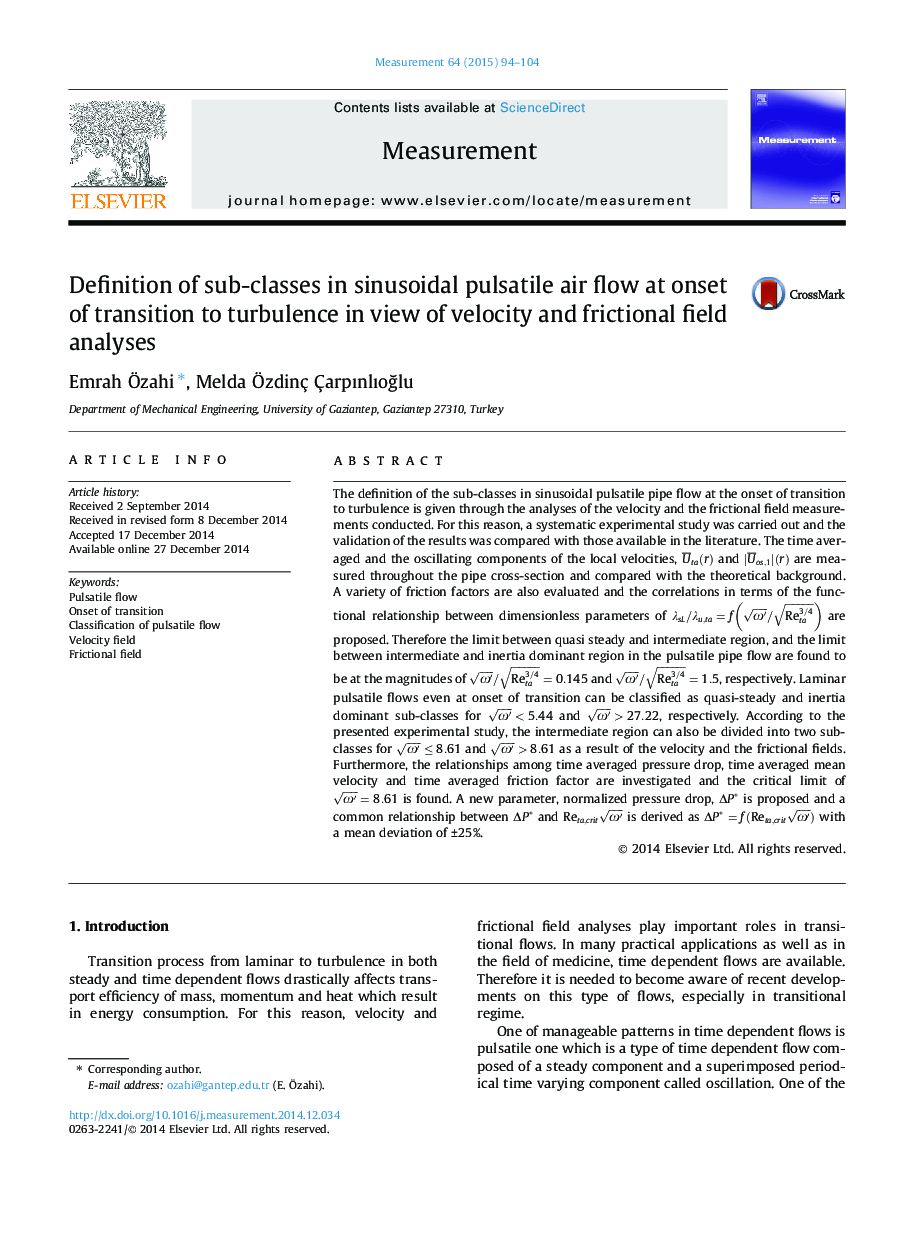| Article ID | Journal | Published Year | Pages | File Type |
|---|---|---|---|---|
| 727361 | Measurement | 2015 | 11 Pages |
•Velocity and frictional field analyses at onset of transition in pulsatile flow.•Limits between quasi steady-intermediate and intermediate-inertia dominant regimes.•Pulsatile flow at onset of transition as quasi-steady and inertia dominant regimes.•Intermediate region can be divided into two sub-classes for ω′⩽8.61 and ω′>8.61.
The definition of the sub-classes in sinusoidal pulsatile pipe flow at the onset of transition to turbulence is given through the analyses of the velocity and the frictional field measurements conducted. For this reason, a systematic experimental study was carried out and the validation of the results was compared with those available in the literature. The time averaged and the oscillating components of the local velocities, U‾ta(r) and |U‾os,1|(r) are measured throughout the pipe cross-section and compared with the theoretical background. A variety of friction factors are also evaluated and the correlations in terms of the functional relationship between dimensionless parameters of λsL/λu,ta=fω′/Reta3/4 are proposed. Therefore the limit between quasi steady and intermediate region, and the limit between intermediate and inertia dominant region in the pulsatile pipe flow are found to be at the magnitudes of ω′/Reta3/4=0.145 and ω′/Reta3/4=1.5, respectively. Laminar pulsatile flows even at onset of transition can be classified as quasi-steady and inertia dominant sub-classes for ω′<5.44 and ω′>27.22, respectively. According to the presented experimental study, the intermediate region can also be divided into two sub-classes for ω′≤8.61 and ω′>8.61 as a result of the velocity and the frictional fields. Furthermore, the relationships among time averaged pressure drop, time averaged mean velocity and time averaged friction factor are investigated and the critical limit of ω′=8.61 is found. A new parameter, normalized pressure drop, ΔP∗ΔP∗ is proposed and a common relationship between ΔP∗ΔP∗ and Reta,critω′ is derived as ΔP∗=f(Reta,critω′) with a mean deviation of ±25%.
